- How to Find the Best Garden Pruning Saw: Our Top Picks - January 5, 2024
- Garden Tower Project Review: How To Start Home Gardening ASAP? - January 5, 2024
- Best Garden Scissors Guide: Which Model Suits You Best? - January 5, 2024
How to Start a Vegetable Garden
Are you thinking of planting cukes, carrots, or tomatoes for the first time? Having a vegetable garden at home is an excellent way of saving money as you get personal and up close with nature.
Besides, you will realize the quality and texture of produce grown from your garden is higher than what is found in the stores and markets. Dig into the tricks and tips below to plan, prepare, and maintain a successful vegetable garden.
Start Small
If you are creating a vegetable garden for the first time, start with a small one. It is advisable to do this and be content with the little produce as you hone your skills and learn to take care of a bigger one. Besides, it makes sense to learn the basics of gardening first before investing your money and time in your new hobby.
Garden requires commitment and time, and the reality will dawn when you start weeding, watering, and planting in your garden. With time, you will know the vegetables you can harvest from the garden and the amount of effort required to take care of them.
As a beginner, start with a garden measuring at least 10 X10 feet- this is almost the size of a small bedroom. Since you are starting small, keep it simple. Select the vegetables you want to grow- five would be enough for your small garden. Have a few of each of the vegetables you settled on and see how it goes.
If you are intimidated by the 10X 10 garden, you can go for smaller measurements. You can even start by growing your vegetables in containers. If containers are your pick, you will not have to work with yards as a balcony or sunny deck will serve the purpose.
Tip: If you tend your 10X 10 feet vegetable garden well by weeding and watering, you will get more produce than a garden filled with weeds and diseases that measures 25X 50 feet.
Plant Vegetables you Like
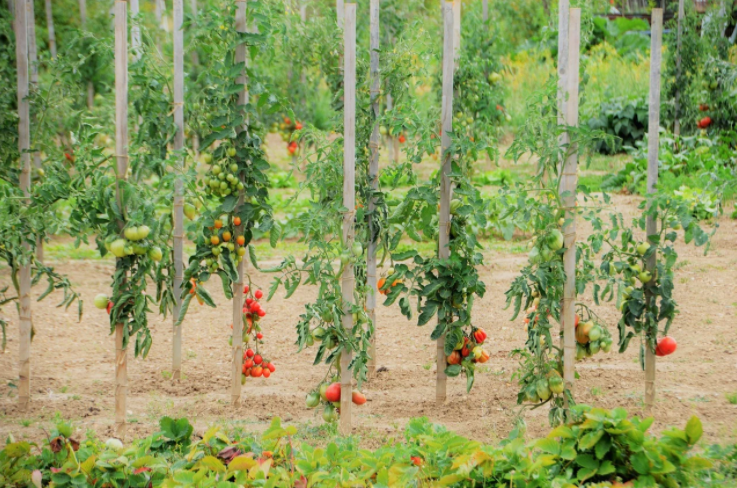
Before settling for the vegetables to plant in your garden, establish what you like to eat. With the vegetables, you should grow in mind, consider the following, then get your shovel ready.
Productivity
Consider how much your family eats, how much you can give away, and how much produce you can store through canning or refrigeration. With a rough estimate of the amount you need, choose the number of seeds you will plant. As a beginner, you might be tempted to plant more than you need.
Vegetables like squash, peppers, and tomatoes keep on giving produce in the season’s cause; therefore, you might not need so many seeds of such plants. On the other hand, vegetables like corn, radishes, and carrots need to be replanted because they can be harvested once only.
Successive Crops
If you plant vegetables that work best in warm and cool weather, you will always receive some produce in fall, summer, and spring.
You can plant broccoli, peas, greens like arugula, carrots, radishes, and lettuce at the beginning of spring. After harvesting crops that survive in the chilly weather, plant vegetables that work best in hot weather like eggplant, peppers, and tomatoes. During the fall, you will harvest kale, cabbage, and potatoes.
Tip: You can boost the yield per square foot in your garden by planting vining crops like peas and beans if you use the garden’s vertical space.
Choosing the Right Spot for the Garden
Choose the site you will use as the vegetable garden carefully. If you want the garden to be a little bit further from the house, be ready to trek daily to look for destructive pests, drooping plants, or for ready produce. If possible, let your garden be near your house for ease of accessibility. Having a garden next to the place makes harvesting produce easier.
It is prudent to consider the sun’s movement during the day. For the plants to get maximum sun exposure, orient your garden from the north to the south.
Plants oriented from the east to the west are not healthy because they shade each other a lot. Note that the three most essential requirements for a healthy garden are soil, water, and sun, and ensure your garden is rightly placed to meet these.
Plan for the Amount of Sun Needed

Just like any other plant, vegetables need the sun to photosynthesize. Photosynthesis is the process where green plants transform the light energy obtained from the sun to glucose. After that, the plants use glucose to produce food for the growing crop and cellulose to build the plant’s cell walls.
If you want your vegetables to thrive, ensure they are in a position where they are exposed to direct sunlight for at least 6 hours in a day without being blocked by fences, shrubs, or trees. Vegetables planted in shady spaces will not grow to your expectations.
When planting vegetables, remember some require a lot of heat, like cucumbers, beans, spinach, peppers, and tomatoes. Under warm conditions, such vegetables take off very fast. While the fruits may take a while to ripe, they are worth planting because of their produce. Such vegetables will take any amount of sunlight provided. For such vegetables, the warmer it is, the better.
Suppose your yard provides some shade, plant vegetables that do not need a lot of sunlight like thyme, parsley, cilantro, chives, spinach, chard, kale, and lettuce.
You can also plant root vegetables like beetroots, radishes, and carrots if the garden receives sunlight for at least 4 hours in a day. You can also switch to container gardening if you have a sunny patio.
You can place vegetables with a sunny terrace that require a lot of sunlight like rosemary, dill, basil, squash, corn, beans, peas, peppers, cucumbers, eggplants, and tomatoes where they will thrive.
The best way to find out which area of your garden will work best for vegetables that need a lot of sunlight or those that need partial sunlight is by observing the space you have.
If you look at your garden during the hottest time of the day- around 2 pm- there are shady places if your garden is in close vicinity to trees and shrubs. You can plant vegetables like kale for the shadowed areas, which require protection from the hot afternoon sun.
Since the sun’s angles change depending on the season, you can use a sun calculator to determine the exact angle the sun is at a given time.
Temperature and Microclimates
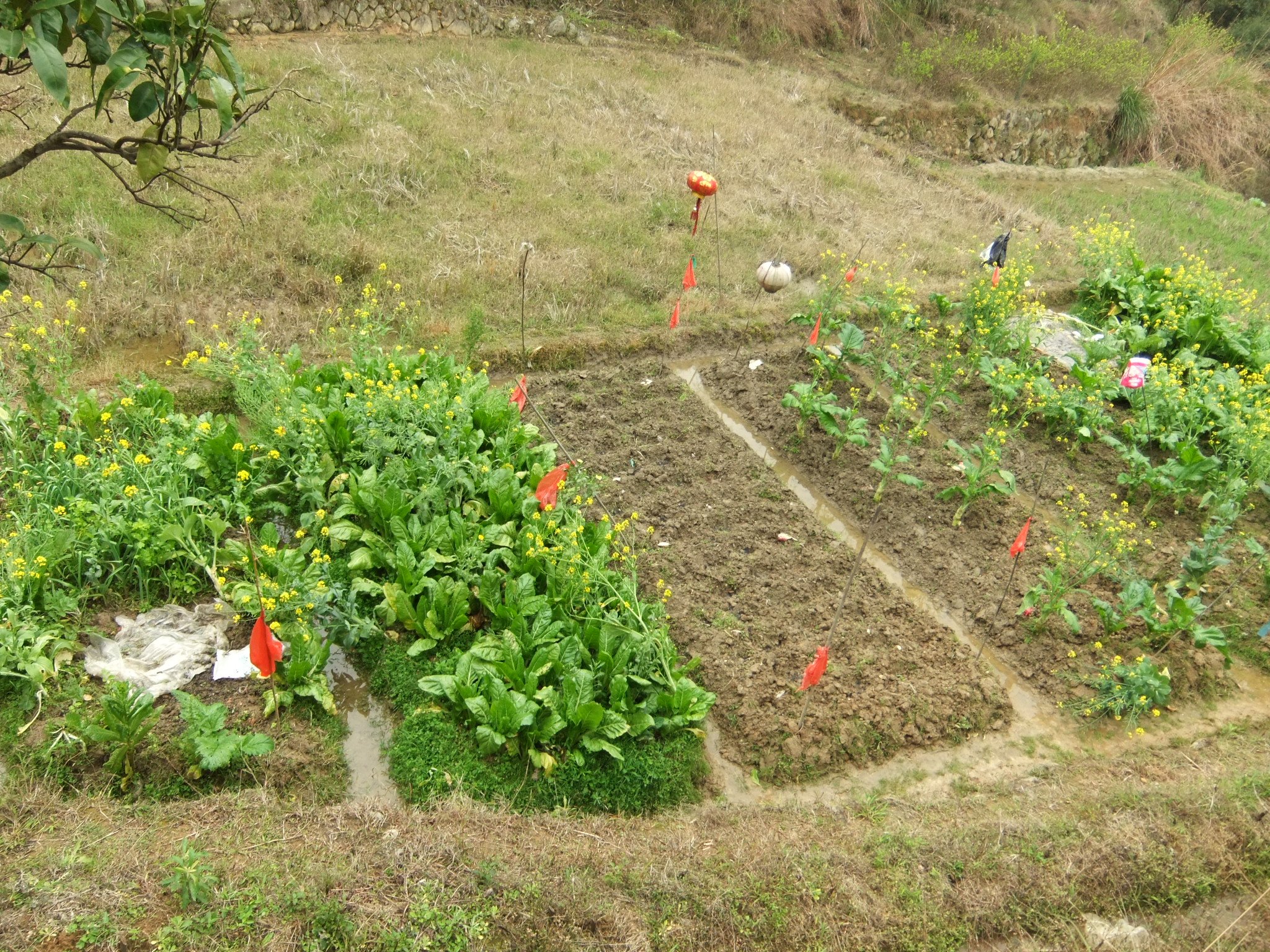
Before deciding which type of vegetable you will plant in your garden, research the plants that work best in your region, the varieties that require less attention, and those requiring a lot of attention to thrive.
Microclimates are smaller areas in a region where the area’s climate differs from that of the larger region. Your vegetable garden might have an environment different from the larger zone depending on the place you live- it could be at the top of the mountain, near an ocean, or at the bottom of a valley.
If you go down to your garden, you will also realize some areas are warmer than others. Sections mess asphalt driveways or brick walls tend to be warmer than places with shades and trees. Also, there are sections of your garden that are likely to get more wind than others.
You can come up with a microclimate of your own by planting different varieties of trees and plants near each other. They will amaze you by how they will improve each other’s growth, increase pollination, and protect one another from diseases and pests.
You should know your space and take advantage of the microclimates in your vegetable garden. Plant the vegetables that need a lot of heat in the warmer areas and plants requiring less heat in the garden’s cooler spots.
Watering the Vegetables
One of the key secrets to a successful vegetable garden is frequent watering, especially in dry and warm regions. You should always water your vegetables, especially the first few weeks after transplanting the seedlings or when the seeds start germinating to gain strength.
If you have established plants in your garden, it would be advisable to provide enough water after every few days instead of sprinkling droplets daily.
After watering your vegetables, the water moves more resonant to the soil and encourages the roots to grow deeper. Deeper roots ensure the plant is healthy and easily access nutrients in the plant’s soil to remain healthy.
The composition of your soil and your region’s weather conditions will help determine when you should water your vegetables. Unlike clay soil, sandy soil takes a short period to dry out. Windy and sunny conditions dry the soil quickly than cloudy and cool weather conditions.
If you are unsure whether it is time to water your vegetables, feel the soil 3 inches down from the container’s surface or garden. If the soil feels dry, you should water the plant. You should feel the soil even if it has been raining because sometimes rain does not soak in the soil but instead runs off.
Tip: By placing your garden near a water source, you will make watering your vegetables easier.
Start with Soil Rich in Nutrients
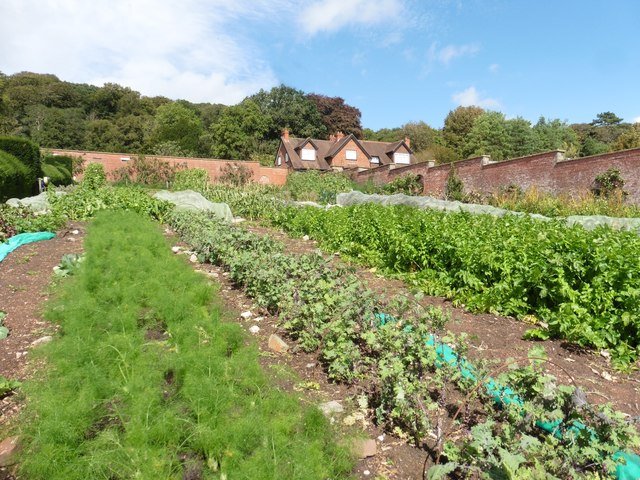
To get a bountiful harvest and produce, give your vegetable garden the best soil. Healthy and rich soil is easily noticeable- it drains well and is easy to dig. If you are unsure whether you have soil rich enough for your vegetables, send a soil sample to a certified lab for testing soil to help.
However, you can find out the type of soil you are using by feeling its texture. Please pick up a handful and examine whether it feels gritty, powdery, or sticky when wet.
Gritty soil means there’s too much sand, too much powder means there is too much silt, and soil that is sticky when wet shows it has a lot of clay. Combining these three soil types in the required proportions determines the soil texture. Besides affecting the availability of nutrients, soil texture also affects drainage.
You would want to plant your vegetables in soil that is crumbly, dark, and full of life. Luckily enough, no matter your soil texture, you can improve its quality by adding organic matter.
For example, if you have sandy soil, nutrients and water will always pass through the large spaces very quickly. Adding compost or organic matter to your sandy soil helps in filling the large holes in the ground. With tiny spaces, the earth will now retain nutrients and moisture for your vegetables to use.
By contrast, clay soil has small spaces, and its particles are densely packed to hold moisture. However, clay soil does not allow air to pass to the roots. By incorporating compost into clay soil, you will have separated the tiny soil particles, and water will drain more freely, and sufficient oxygen will reach the roots.
When preparing the soil before planting the vegetables, spread the necessary additives, and mix them into the soil with a Spade or tiller. It would be best if you did not step on soil that you have freshly tilled since you can make it compact-moisture, and air might not pass. After mixing, rake the surface until it is smooth, water the soil to supply it with sufficient moisture. Let the soil rest for a few days before planting for the additives to do their work.
Gather your Work Tools
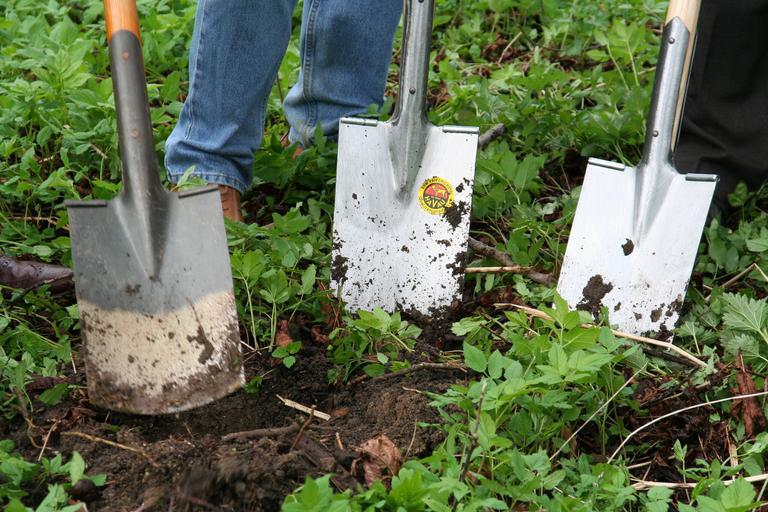
The type of vegetables you plant to plant and your garden’s size determine the tools you will need. If you have a raised garden bed, smaller hand tools will be more effective and are manageable. On the other hand, if you have a large garden, you will need more powerful tools. Some of the essential gardening tools you should have include:
Trowels and shovels
These tools are used to give the soil additives such as compost, when excavating new beds and when digging holes.
Loppers and pruning shears
When pruning plants and harvesting vegetables, handheld shears are the best. Loppers, on the other hand, are used when trimming spring shoots from trees. You can then use the long and straight shoots as the stakes for vining plants like cucumbers, beans, and peas.
Gloves
Gloves help in ensuring the very persistent dirt particles don’t get stuck in your nail beds. Leather gloves are the best for gardeners because they allow the wearer to pull the brambles and thistles by hand. Also, leather gloves are thick enough, ensuring you don’t get pricked by thorns.
Pitchforks
Pitchforks always come in handy during mulching when you spread hay over your garden bed. You can also use pitchforks to dig out rocks or potatoes. Also, you can use the tool to integrate compost with soil without disturbing the soil.
Buckets
Buckets will make your work easier when moving soil, compost, weeds, or harvesting produce like fruits. You can get different bucket sizes.
Wheelbarrow
Besides saving your time, wheelbarrows also save you energy. You can use the wheelbarrow to transport trimmings and weeds to the compost pile during fall and summer. In spring, you can use the wheelbarrow to distribute compost and mulch on your garden bed.
Watering hose and can
A successful garden should be regularly watered. A watering can or hose is a gentle watering method for Young plants and has a higher flow method for mature crops.
How to Plan the Layout
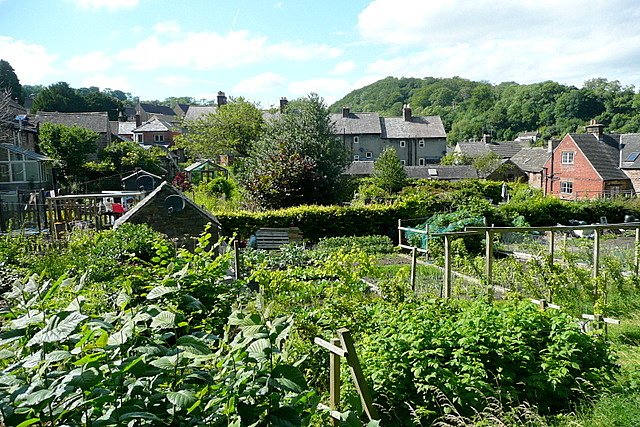
You can choose to use either intensive cropping or row cropping when planning the layout of your garden. Each has its benefits.
Row Cropping
Place your plants in rows, leaving a space of 18 inches between them so that you can easily walk through. Row cropping seems to work best for large vegetable gardens because, with rows, mechanical equipment like tillers becomes easier. However, with row cropping, you leave a large amount of space, reducing the number of vegetables you could have planted.
Tip: Tall plants like tomatoes and plants that can grow on vertical supports like beans, cucumbers, and peas grow better when planted north of the garden.
Intensive Cropping
Intensive cropping helps boost your vegetables’ productivity since you space two plants together in a bed with a width of 4 feet.
You place transplants or sow seeds so that their leaves do not touch each other when they mature. Since intensive cropping uses almost every inch of the soil, it works for nearly all vegetable types apart from vining vegetables like peas and cucumbers. However, with intensive cropping, you have to weed the garden by hand because the plants are so close to each other.
One of the specialized version of intensive cropping is the square foot method. With this method, you subdivide your 4X 4 feet garden using physical grid-like lattice strips to end up with 1-foot squares. To fill a garden with sides that are high by 4 inches, you will need eight cubic feet of high-quality garden soil.
Tip: If you hate weeding, you have to make it a priority here. Weeds compete with your plants for nutrients, moisture, and light. Always check your garden for weeds, especially when the plant is young.
How to Fix and Test your Soil
If you plant your vegetables in a condition where the soil is not ideal, they will suffer. Always test your soil before planting anything. If you do not have a soil testing kit, you can manually test your soil in the following easy steps.
- Soak then dig- soak the soil with enough water, wait for 24 hours, then dig some dirt to test.
- Squeeze the soil- if you squeeze the soil and water comes out, consider adding compost to improve the drainage. You can also test the temperature of the soil to determine its drainage.
- Check your hand- if after squeezing the soil, it has not formed a ball or the ball falls after a slight touch, the soil has a lot of sandy soil. If, after poking the soil, it breaks to crumbs like a bar of chocolate, the soil is in an ideal condition. If you realize the soil does not drain well, your best option will be installing raised beds instead of sunken beds.
Tip: Coming up with a raised garden bed helps if you have soil that does not drain well. Line the lower parts of the raised garden bed with newspaper, then fill with soil. By doing this, you save yourself the energy of digging.
Choosing the Right Varieties of Vegetables
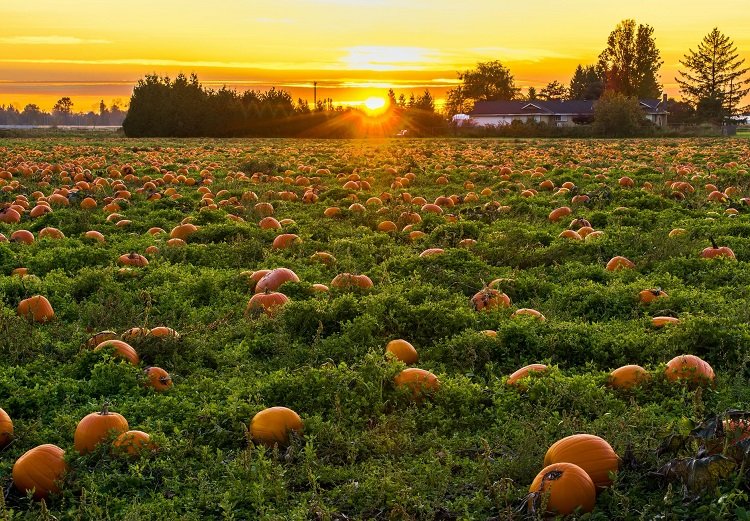
As you choose the vegetables you want to plant in your garden, be keen on describing the seed labels, tags, or packets. There are different varieties of vegetables, and each has its benefits.
There are vegetable types that produce smaller plants that can be grown in small gardens or containers. Other vegetable varieties are more resistant to diseases, produce better yields, or have a better tolerance to warmth and cold.
When choosing the vegetables, you want to plant in your garden, start with those you like to eat, then look at the sizes, and then consider the care they need. If you are not sure of the variety to plant in your vegetable garden, you can ask a garden center staff or greenhouse expert.
There are times when you want to plant more than one variety of the same vegetable. Many plant different varieties so that if one variety fails, they can get products from the other. When harvesting, you look at the variety that produced more yields and settle for that particular variety when planting the following season.
Some of the easiest vegetables you can start with are swish chard, carrots, kale, potatoes, summer squash, garlic, beans, peas, radishes, and lettuce. When deciding on the vegetables to plant, combine vegetables that work well in warm and cool weather conditions. Each season is different, and some summers can take forever if they want to.
Tomatoes thrive best in warm conditions, and there are times they can ripen after weeks, and there are other occasions when they have to be picked early when unripe to avoid frost. If you combine vegetables that work well in warm and cool weather conditions, you will always get produce regardless of terrible seasons.
Plants can either be perennials, biennials, or annuals.
- Annuals– these take a year to complete a lifecycle. Annual plants include radishes, tomatoes, and lettuce. When the season ends, such vegetables will ultimately die, and you will have to restart by sowing seeds the following season.
- Biennials– these are plants that take two years to complete their lifecycle. However, most gardeners grow biennials as annuals and harvest them before reproducing in the second year. Unless you have intentions of saving the vegetables’ seeds, you cannot bring the plant to its second summer. Plants that are biennials include kale, cabbage, and celery.
- Perennials– these are considered gifts to gardeners because they occur yearly. Perennials can exist for decades, and the longer they have been in existence, the better their productivity. Perennial plants include globe artichokes, grapes, blueberries, honeyberries, raspberries, asparagus, and rhubarb.
Most trees and fruits are perennials. Healthy fruit trees can be highly productive. The apple tree, for instance, can produce more than a hundred pounds of apples every summer. However, perennials can be slow to start, and you might be forced to wait for some years before they start producing. Once they are established, all that is left is harvesting.
When deciding whether to plant perennials, consider the zone of your garden. Some plants will not grow as perennials depending on the climate.
Transplants or Seeds- Which is Better?
After deciding the type of vegetables you want in your garden, determine if you will visit a garden center to get small plants or get seeds for planting.
If you’re going to plant seeds of plants like radishes, beetroots, mesclun mix, lettuce, squash, beans, and peas, they should be started indoors for around six weeks if they are from the most recent frost. However, you can directly sow some plants like peas, beans, and carrots. When purchasing seeds, read the packaging for instructions and directions of use.
Some prefer buying seedlings from a garden center or nursery and transplant them to a vegetable garden. Plants are growing slowly, like kale, celery, and broccoli work best with this method. Notably, transplants mature at a faster rate than plants grown from seeds. Also, transplants resist pests and diseases more as they grow because they were already strong when being planted.
How to Care for Your Garden
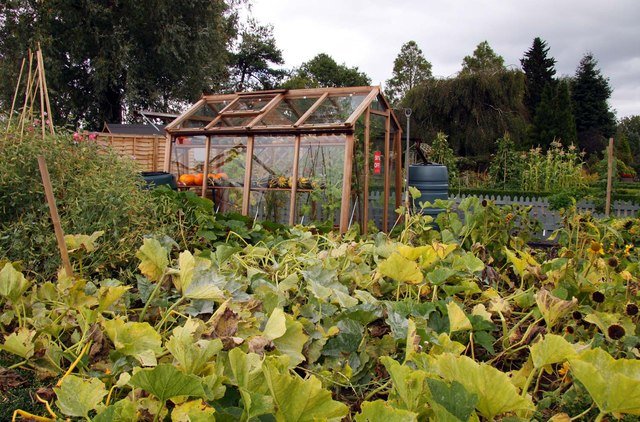
You have planned, prepared, and planted your garden; what’s next? It would be so shameful to let your vegetable garden wither during summer after channeling your effort and time into it. To ensure your garden remains intact and produces healthy produce, follow these steps:
Uproot Weeds when Young
Weeds compete with the vegetables in your garden for nutrients, water, and light. You should, therefore, inspect your garden regularly and ensure there are no weeds.
To discourage weed seedlings from growing, you can use a hand fork or hoe to cultivate or lightly stir the top inches of the soil. You can also use other methods to keep weeds away, like placing a mulch of plastic, compost, or clean straw around your vegetables.
Feed what you will Eat
Adding fertilizer to your vegetables maximizes the produce. Some gardeners prefer adding high-quality compost when planting their vegetables, while others apply warm-season fertilizer according to the package’s instructions.
Get rid of diseases and pests
While some diseases and pests might require particular intervention, your vegetables will be free from diseases and problems if you follow the guidelines given.
Don’t tolerate animals
You should not allow animals like rabbits and deer in your vegetable garden. To prevent deer from jumping in your vegetable garden, let your fence have a length of 8 feet. Likewise, to prevent rabbits from digging their way in your farm, extend your fence’s size to go 6 inches beneath the soil.
Remove destructive insects
To deal with limited infestations of insects like caterpillars, you can pick them by hand and drop each of them in a bucket full of water.
This is a safe and effective way of dealing with large destructive insects. If the insects in your vegetable garden are numerous and cannot be handpicked, use insecticidal soap. Remember always to check the manufacturer’s directions when using chemicals to control pests in your garden.
Manage fungal diseases
If you regularly water the soil on your vegetable garden-not leaves, you reduce the chances of having them infected by fungal diseases. If you use a sprinkler for watering, ensure you sprinkle during the day for the leaves to have dried during nightfall.
If you notice your vegetable garden has fallen prey to fungal diseases, get rid of it by throwing it in the trash and not in your compost pile.
There are varieties of vegetables proven to be resistant to diseases, and planting such will help avoid fungal infections. In addition, you can change the spot where you plant the vegetables every year to prevent fungal diseases. By changing positions, you will be controlling the diseases from forming a permanent home in your garden.
How to Harvest your Vegetables
Among the significant activities in a garden is harvesting. Certain vegetable types can be harvested more than once during a season. Lettuce, for instance, continues growing and producing even after snipping the Young leaves. Other vegetables like cucumber and summer squash can be harvested when the fruit becomes long.
The general rule when harvesting vegetables is if it looks ready to eat, it might be! Many vegetables produce more after regular harvests.
FAQs
Answer: A lot regarding how you can go about setting up a garden for the first time has been highlighted here. It is not as complicated as it might seem and you need to get a few things rights.
Some essential ones to keep in mind include; site it well, follow the sun, water the garden, add some mulch, know the frost dates, and add some mulch. The tips for starting a new garden for beginners are endless but the mentioned ones are among the most important ones that will help you to set up a nice garden.
Answer: There is no fixed amount of money that is required to start a vegetable garden but you can get a few ranges to help you understand what you will need. Gardening takes time and you could be required to invest some money before you start harvesting.
It takes about $300 to set up a small garden bed, and seeds should cost about $30 per year. Miscellaneous costs depend on your site, size of the garden, and plants you want there but they won’t require you to spend much unless you want something extraordinary.
Answer: Growing vegetables in your space are good due to a few reasons. First, it is healthier for your family since the produce is fresh and without chemicals. It is also good for the environment and fulfilling activity that you can engage in when you want to unwind and take some time off your day to day hustles.
Conclusion
Starting a vegetable garden involves a lot of things, but it is not rocket science. It is a progressive activity and the results of what you do at the beginning might show later on.
This way, do not be tempted to cut corners and follow some of the advice given in this peace. A nice vegetable garden can be a sustainable source of fresh food for your family for a long time. If you had been planning to do it for a long time, do not procrastinate anymore and just start doing it. You will definitely enjoy the results!
Further Read: How to Grow and Care For:
